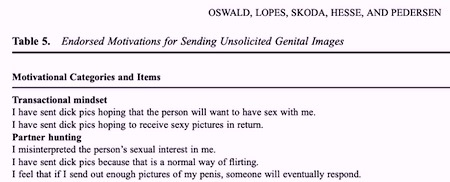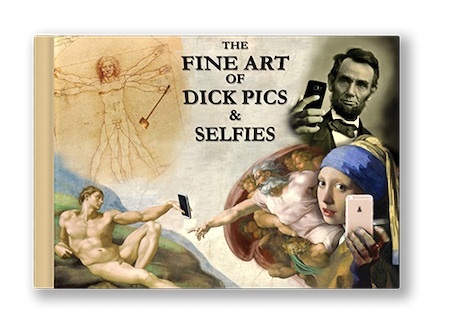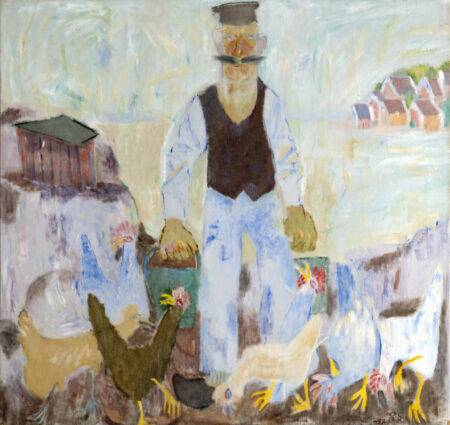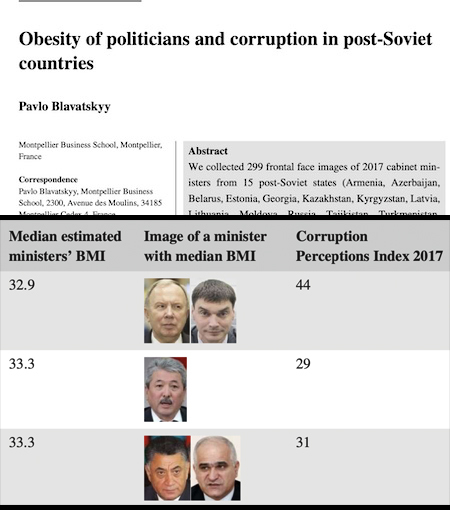Marc Abrahams's Blog, page 110
July 29, 2020
Pocket-Sized #1026: “Swimming in Fat Metaphors”
In this Pocket-Sized episode #1026, Marc Abrahams shows an unfamiliar research study to Dany Adams. Dramatic readings and reactions ensue.
The research mentioned in this episode is featured in the Dogs (and Cats) issue (Vol. 21, #4) of the Annals of Improbable Research Magazine.

Remember, our Patreon donors, on most levels, get access to each podcast episode before it is made public.
1. Dany Adams encounters:
“How Much Energy is Locked in the USA? Alternative Metrics for Characterising the Magnitude of Overweight and Obesity Derived from BRFSS 2010 Data,” Daniel D. Reidpath, Mohd Masood, and Pascale Allotey, International Journal of Public Health, vol. 59, no. 3, 2014, pp. 503-507.
Seth Gliksman, Production Assistant
Available on Spotify, Apple Podcasts, Overcast, Google Podcasts, AntennaPod, BeyondPod and elsewhere!

Studying Men Who Send Out Pictures of Bits of Themself
Scholars continue to study some of the many men who send out pictures of bits of themselves. A new study and a new book stand out. The book was written by a man who sends out copies of his book about studying men who send out pictures of bits of themselves.
A Study to Study
The study is: “I’ll Show You Mine so You’ll Show Me Yours: Motivations and Personality Variables in Photographic Exhibitionism,” Flora Oswald, Alex Lopes, Kaylee Skoda, Cassandra L. Hesse, and Cory L. Pedersen, Journal of Sex Research, vol. 57, no. 5, 2020, pp. 597-609. (Thanks to Sarah Larsen for bringing this to our attention.) The authors, at Pennsylvania State University, Kwantlen Polytechnic University, and The University of British Columbia, explain:
“The purpose of this study was to investigate differences in the motivations, personality aspects, and sexualities of men who send unsolicited genital images relative to men who do not send such images. Within our sample of 1,087 heterosexual males, 48% (n = 523) confirmed that they had engaged in sending unsolicited dick pics, suggesting that this behavior is common amongst heterosexual men…. [Our] findings are consistent with previous literature indicating that men often send such images in the hopes that the recipients will be turned on by the images and reciprocate the behavior.”
A Book to Look At
The book is: The Fine Art of Dick Pics and Selfies, Jeremy Bell, brotherhogarth [publishers], 2020, ISBN 099883422X
BONUS: The author will play a small but vital role in the 30th First Annual Ig Nobel Prize ceremony.

July 28, 2020
Dermatological manifestations in artworks [study]
The painting, by Ragnar Sandberg (1902–1972) entitled Chicken Handler (Hönsskötären , 1937), depicts a farmer and his chickens. Although many may have overlooked the red face-rash that the farmer evidently has, professor Nicolas Kluger of The University of Helsinki | HY-Skin and Allergy Hospital, has not.
“The farmer displays a striking medio‐facial redness located on the nose and the cheeks and that extends to the glabella, under the moustache, and the chin. The rash spares the periorbital area (Fig. 1). To us, the painter has here depicted a facial seborrhoeic dermatitis in his character, possibly associated also with rosacea.”
“We failed to find any previous depiction of seborrhoeic dermatitis in our previous researches or in the medical literature. The redness of the face and nose of the chicken handler here echoes back to the comb and wattles of the roosters. The question whether Ragnar Sandberg painted intentionally a cutaneous facial condition such as seborrhoeic dermatitis remains unanswered.”
See: Seborrhoeic dermatitis in an oil painting at the Gothenburg Museum of Art in the Journal of the European Academy of Dermatology and Venereology, Volume 34, Issue 7, Feb. 2020.
Note: Professor Kluger also runs Le Dermato tatoué blog. “Dermatology, Tattoos , Art . . .” (in French)
Research research by Martin Gardiner

July 27, 2020
Pocket-Sized #1025: “German Sense of Humor”
In this Pocket-Sized episode #1025, Marc Abrahams shows an unfamiliar research study to Jean Berko Gleason. Dramatic readings and reactions ensue.
The research mentioned in this episode is featured in the special Psychology issue (vol. 26, #1) of the Annals of Improbable Research magazine.

Remember, our Patreon donors, on most levels, get access to each podcast episode before it is made public.
1. Jean Berko Gleason encounters:
“The German Version of the Humor Styles Questionnaire: Psychometric Properties and Overlap with Other Styles of Humor,” Willibald Ruch and Sonja Heintz, Europe’s Journal of Psychology, vol. 12, no. 3, 2016, pp. 434-455.
Seth Gliksman, Production Assistant
Available on Spotify, Apple Podcasts, Overcast, Google Podcasts, AntennaPod, BeyondPod and elsewhere!

July 24, 2020
High Precision Glass Polishing with Ketchup
Catching up with recent research, possibly the only research, on using ketchup to polish glass: A new study takes the process to new levels of precision.
The study is: “High Precision Glass Polishing with Ketchup,” Max Schneckenburger, Stefan Schiffner, and Rainer Börret, Proceedings of the SPIE 11478, Seventh European Seminar on Precision Optics Manufacturing, 114780F, July 8, 2020. (Thanks to Julius Löbel for bringing this to our attention.) The authors, at the Centre for Optical Technologies, Aalen, Germany, report:
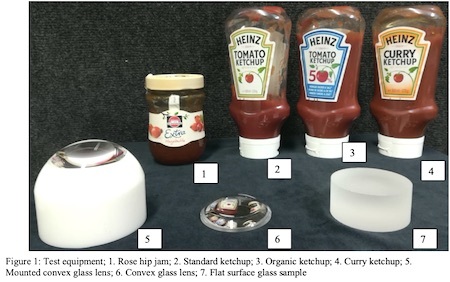
“Due to the advantages over conventional polishing strategies, polishing with non-Newtonian fluids are state of the art in precision shape correction of precision optical glass surfaces…. thixotropic fluids like ketchup… reduce the roughness by polishing, without changing the shape of the sample. Tomato ketchup shows a time-dependent change in viscosity: the longer the ketchup undergoes shear stress, the lower is its viscosity. Therefore, in this article, a new processing is put forward to polishing glass surfaces with ketchup containing micro-sized Ce2O. Besides conventional ketchup, curry ketchup and an organic product were tested as well. An industrial robot onto the work piece surface guides the polishing head. The different types of ketchup are compared by means of roughness and shape accuracy and the potential regarding to manufacture high-precise optical glass.”

July 23, 2020
Cormorants rain their waste upon limos in Rotterdam
Cormorants are showering shit upon limousines that park unwisely in one particular spot in Rotterdam. Kees Moeliker, ornithologist, director of the natural history museum in Rotterdam, and Ig Nobel Prize winner (for discovering homosexual necrophilia in the mallard duck), writes about it in the Dutch newspaper NRC . Here is a machine-translation into English:
Full layer for the limo
Kees Moeliker sees how cormorants in Rotterdam punish long-term parkers.
Thanks to its favorable location just outside the paid parking zones and close to metro station Kralingse Zoom, the ‘s-Gravenweg in Rotterdam is a favorite place for long-term parkers. The neat neighborhood does not like it, those cars that probably do not pass the MOT and also take up space. The nuisance has recently been combated biologically with a powerful weapon: the shitting cormorant.

These large, black waterfowl settle on the light poles along the way, dry their wings in the wind, brush the feathers and do nothing more than digest the last meal and relieve themselves frequently. Twice an hour of careful observation yielded a total of seven flares per cormorant – huge blobs of bird droppings that always hit their target. The volume is large because birds discharge their waste through one outlet – the cloaca -: the urine is white and watery, the stool usually dark and always viscous depending on the food choice.
Local residents know the birds and their behavior and in particular avoid the infamous light poles 209 and 307. The ignorant wretches who park their car right under those lampposts find their vehicle completely undercut. After a day they can rinse the mud in the car wash again, but for long-term parkers the shit accumulates into a thick guano crust that can only be removed with the high-pressure sprayer and scouring sponge. A Fiat Panda (model Young) from 2001 changed from a crazy cart to a smelly wreck, and I had to look with sorrow at how the linen hood of a dark blue Saab convertible was whitewashed. Currently there is a white limousine under pole 307. With a length of almost six meters, it occupies two parking spaces and the cormorant has a double chance of hitting.

Although no one disputes the unsightly effect of bird droppings on cars, the damage caused by feces to the body is still a lot of misunderstanding. The car cleaning industry persists in the myth that uric acid from bird droppings affects the paint, but that chemical substance is converted by birds before feces reach the exit. The devil is in the enzymes and other proteins in the poo that degrade the paint in full sun (at high temperature). At the nanoscale, craters can even be seen in the top layer. Those holes can be closed again with the right polish. Better advice is: Look up before you park!

July 22, 2020
Pocket-Sized #1024: “Surgery Grapefruit”
In this Pocket-Sized episode #1024, Marc Abrahams shows an unfamiliar research study to Chris Cotsapas. Dramatic readings and reactions ensue.
The research mentioned in this episode is featured in the Important Research issue (Vol. 25, #5) of the Annals of Improbable Research Magazine.

Remember, our Patreon donors, on most levels, get access to each podcast episode before it is made public.
1. Chris Cotsapas encounters:
“The Grapefruit: An Alternative Arthroscopic Tool Skill Platform,” David A. Molho, Stephen M. Sylvia, Daniel L. Schwartz, Sara L. Merwin, and I. Martin Levy, Arthroscopy: The Journal of Arthroscopic and Related Surgery, vol. 33, no. 8, 2017, pp. 1567-1572.
Seth Gliksman, Production Assistant
Available on Spotify, Apple Podcasts, Overcast, Google Podcasts, AntennaPod, BeyondPod and elsewhere!
BONUS (quasi-related): A new study reports that “Shells and grapefruits inspire first manufactured non-cuttable material“. (Thanks to Neil Judell for bringing it to our attention.)

July 21, 2020
Obesity of Politicians as Indicator of a Country’s Corruption
This new study gives a quick, iffy method to identify which country’s politicians appear to be bigly corrupt, or just plain bigly.
The study is: “Obesity of Politicians and Corruption in Post‐Soviet Countries,” Pavlo Blavatskyy, Economic of Transition and Institutional Change, epub 2020. (Thanks to Gabriel Istrate for bringing this to our attention.) The author, at Montpellier Business School, France, explains:
We collected 299 frontal face images of 2017 cabinet ministers from 15 post‐Soviet states (Armenia, Azerbaijan, Belarus, Estonia, Georgia, Kazakhstan, Kyrgyzstan, Latvia, Lithuania, Moldova, Russia, Tajikistan, Turkmenistan, Ukraine and Uzbekistan). For each image, the minister’s body‐mass index is estimated using a computer vision algorithm. The median estimated body‐mass index of cabinet ministers is highly correlated with conventional measures of corruption (Transparency International Corruption Perceptions Index, World Bank worldwide governance indicator Control of Corruption, Index of Public Integrity). This result suggests that physical characteristics of politicians such as their body‐mass index can be used as proxy variables for political corruption when the latter are not available, for instance at a very local level….
Estimated body-mass index for ministers in our dataset is generally quite high. According to the estimated body-mass index, 96 out of 299 ministers (32%) are severely obese (estimated body-mass index between 35 and 40). In particular, 13 out of 24 Uzbek ministers (54%), 8 out 18 Tajik ministers (44%) and 10 out of 24 Ukrainian ministers (42%) are estimated to be severely obese. Another 13 out of 299 ministers in our dataset (4%) are very severely obese (estimated body-mass index greater than 40). In particular, 3 out of 20 Kazakh ministers (15%) and 2 out of 24 Ukrainian ministers (8%) are estimated to be very severely obese. Only 10 out of 299 ministers in our dataset (3%) are estimated to have normal weight (body-mass index between 18.5 and 25). In particular, the governments of Azerbaijan, Estonia, Georgia, Kazakhstan, Latvia, Lithuania, Ukraine and Uzbekistan each have one minister with an estimated normal weight. None of the ministers in our dataset is estimated to be underweight (body-mass index below 18.5).
The study is confined to the aforementioned nations.
Earlier Works
Professor Blavatskyy has done research on a wide variety of areas. Among his most celebrated previous papers is: “Why Do Young Women Marry Old Men?” Pavlo Blavatskyy, Theory and Decision, Springer, vol. 85, no. 3, 2018, pp. 509-525.

July 20, 2020
“Air Throne” – relief for drummers who sit on sticky stools [new patent]
“A drum ‘throne’ is a three or four-legged padded seat or stool the drummer sits on while playing. Thrones may be shaped like round cushions or in a saddle design. Throne heights may be adjusted to accommodate the drummer.”
“The drummer performs while seated on a drum throne to free up both arms and legs for the performance of instruments such as drums and percussive instruments positioned around the drummer.“
Sticky situations can sometimes develop, however, due to the throne’s plastic [plasticky?] padded seat cushion – which is often made from polyurethane foam covered in vinyl.
“Many times, during long drumming sessions sweat can build up and cause very uncomfortable conditions for the drummer. Therefore, what is needed is a way to keep a drummer cool during his (her) drumming performance and/or practice.”
In a drive to alleviate such unpleasantnesses, inventors Volk, et al. have come up with an ‘Air Throne’ – which has just been granted a US patent. As the diagram shows, it features a built-in electric fan that wafts fresh air up through the seat.

See: United States Patent 10,709,252, Volk , et al. July 14, 2020,
Note: The patented Air Throne is, or perhaps shortly will be, available as a commercial product from TheAirThrone.com
Bonus Assignment [optional] List other activities that could benefit from an active electric air-ventilated seat.
Research research by Martin Gardiner

July 19, 2020
“Dung Beetle Astronomy”— an Ig Nobel favorite moment
This historic Ig Nobel Favorite Moment video stars Geri Sullivan, who helped organize many of the Ig Nobel Prize ceremonies. The Ig Nobel Prizes honor achievements that make people LAUGH, then THINK.
The 30th First Annual Ig Nobel Prize Ceremony will be webcast September 17, 2020, at www.improbable.com
Video Coordinator, Narrator, & Typist: Seth Gliksman

Marc Abrahams's Blog
- Marc Abrahams's profile
- 14 followers


